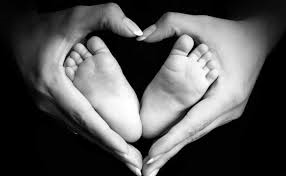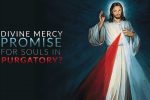Queen of Heaven? Part II

As I said in an earlier blog post, Pope Pius XII pithily summarized the core reasons Christians ought to honor Mary with the title of Queen of Heaven and Earth:
According to ancient tradition and the sacred liturgy the main principle on which the royal dignity of Mary rests is without doubt her divine motherhood. In holy writ, concerning the son whom Mary will conceive, we read this sentence: “He shall be called the son of the most high, and the Lord God shall give unto him the throne of David his father, and he shall reign in the house of Jacob forever, and of his kingdom there will be no end,” and in addition Mary is called “Mother of the Lord,” from this it is easily concluded that she is a queen, since she bore a son who, at the very moment of his conception, because of the hypostatic union of the human nature with the Word, was also as man, king and lord of all things. So with complete justice St. John Damascene could write: “When she became mother of the creator, she truly became queen of every creature.” Likewise, it can be said that the heavenly voice of the Archangel Gabriel was the first to proclaim Mary’s royal office.[1]
If we understand that Jesus is the king of Israel, then we know who Mary is: the queen mother. It really is that simple.
I will now add Revelation 12 to the mix in demonstrating Mary’s queenship:
And a great sign appeared in heaven, a woman clothed with the sun, with the moon under her feet, and on her head a crown of twelve stars; she was with child… she brought forth a male child, one who is to rule all the nations with a rod of iron, but her child was caught up to God and to his throne… Then the dragon was angry with the woman, and went off to make war on the rest of her offspring, on those who keep the commandments of God and bear testimony to Jesus (Rev. 12:1-2; 5; 17).
Here Mary is clearly depicted as a cosmic queen giving birth to both Christ and all Christians, all the while wearing her royal crown. She rules and reigns with her divine son at the center of the perennial battle between the kingdom of God and the kingdoms of this world in union with “the serpent” of old. These texts alone demonstrate Mary to be queen of the kingdom of Christ.
But here’s the problem. Although Pope Pius XII says “it is easily concluded that [Mary] is a queen,” it is not so easy for millions outside of the Catholic Church to conclude. For the skeptic, then, I am now going to show how a fuller understanding of Old Testament typology can be the key to illuminating the truth of Mary’s queenship.
Hidden in the Old and Revealed in the New
The “kingdom of David”—which Christ came to (in a sense) re-constitute, in accord with prophecy—is the most prominent type of “the kingdom of Christ” in the New Covenant, and it also reveals Mary’s role as queen of that New Covenant kingdom.[2]
I will raise up your [King David’s] offspring after you, who shall come forth from your body, and I will establish his kingdom. He shall build a house for my name, and I will establish the throne of his kingdom forever. I will be his father, and he shall be my son.[3]
For to us a child is born, to us a son is given; and the government will be upon his shoulder, and his name will be called “Wonderful Counselor, Mighty God, Everlasting Father, Prince of Peace. Of the increase of his government and of peace there will be no end, upon the throne of David, and over his kingdom, to establish it, and to uphold it with justice and with righteousness from this time forth and for evermore. The zeal of the Lord of hosts will do this (Isa. 9:6-7).
From the very first verse of the New Testament through the book of Revelation, we find Jesus referred to as this prophetic “son of David,” or “the holy one, the true one, who has the key of David.”[4] There can be no doubt that Christ is revealed as the king. But what is revealed to us about a queen?
Scott Hahn provides the answer in the remarkable ancient office and Old Testament type of the gebirah (Heb.: great lady):
In the ancient Near East, most nations were monarchies ruled by a king. In addition, most cultures practiced polygamy; so a given king often had several wives. This posed problems. First, whom should the people honor as queen? But more important, whose son should receive the right of succession to the throne? In most Near Eastern cultures, these twin problems were resolved by a single custom. The woman ordinarily honored as queen was not the wife of the king, but the mother of the king.[5]
It can be difficult for us in the modern Western world to understand ancient monarchical concepts. But first-century Jews understood the notion of the kingdom that Jesus preached because they lived it. They knew that a kingdom meant that there was a king. And, in ancient Israel as in many nearby cultures, if there was a king there was a queen mother.
2 Kings 11:1-4:
Now when Athaliah the mother of Ahaziah saw that her son was dead, she arose and destroyed all the royal family. But Jehosheba, the daughter of King Joram, sister of Ahaziah, took Joash the son of Ahaziah, and stole him away from among the king’s sons who were about to be slain, and she put him and his nurse in a bedchamber. Thus she hid him from Athaliah, so that he was not slain; and he remained with her six years, hid in the house of the Lord, while Athaliah reigned over the land.
Queen Athaliah ruled in Israel for six years after her son, King Ahaziah died. She was a wicked woman and so may not seem to be the greatest type of the Blessed Mother. But then there were many wicked kings in ancient Israel, too, who were nonetheless types of Christ. (Even the great King David himself is quite well-known for his moral failings.) Leaving aside Athaliah’s wickedness, we see in this text a scriptural example of the importance and the authority of the queen mother.
2 Chronicles 15:16:
Even Maacah, his mother, King Asa removed from being queen mother because she had made an abominable image for Asherah. Asa cut down her image, crushed it, and burned it at the brook Kidron.
Queen Mother Maacah was not exactly a picture of holiness, either. But her office was a powerful one in ancient Israel. Maacha held royal authority and was only deposed from it because she made an idol.
Jeremiah 13:18:
Say to the king and the queen mother: “Take a lowly seat, for your beautiful crown has come down from your head.”
Both the king and the queen mother wore royal crowns, just as Mary is depicted wearing in Revelation 12:1.
Perhaps the best example of the power and authority of the queen mother in the Old Testament is found personified in Bathsheba in 1 Kings.
1 Kings 1:11-16, 22:
Then Nathan said to Bathsheba the mother of Solomon, “Have you not heard that Adonijah the son of Haggith has become king and David our lord does not know it? Now therefore come, let me give you counsel, that you may save your own life and the life of your son Solomon. Go in at once to King David, and say to him, “Did you not, my lord the king, swear to your maidservant, saying, ‘Solomon your son shall reign after me, and he shall sit upon my throne’? Why then is Adonijah king?” Then while you are still speaking with the king, I will come in after you and confirm your words. So Bathsheba went to the king in to his chamber (now the king was very old, and Abishag the Shunamite was ministering to the king). Bathsheba bowed and did obeisance to the king, and the king said, “What do you desire?”… While she was still speaking with the king, Nathan the prophet came in.
While King David was still alive, Bathsheba was merely one among many of his wives. As such, she had to bow before her husband the king when making a request of him. In this case, in order to ensure that her request would be granted by the king, she also needed the aid of Nathan the prophet. However, after David’s death, Bathsheba received a crown and a drastic change in authority. Bathsheba became the queen mother.
1 Kings 2:13-23:
Then Adonijah the son of Haggith came to Bathsheba the mother of Solomon. And she said, “Do you come peaceably?” He said, “Peaceably.” Then he said, “I have something to say to you.” She said, “Say on.” He said, “You know that the kingdom was mine, and that all Israel fully expected me to reign; however the kingdom has turned about and become my brother’s, for it was his from the Lord. And now I have one request to make of you; do not refuse me.” She said to him, “Say on.” And he said, “Pray ask King Solomon—he will not refuse you—to give me Abishag the Shunammite as my wife.” Bathsheba said, “Very well; I will speak for you to the king.”
So Bathsheba went to King Solomon, to speak to him on behalf of Adonijah. And the king rose to meet her, and bowed down to her; then he sat on his throne and had a seat brought for the king’s mother; and she sat on his right. Then she said, “I have one small request to make of you; do not refuse me.” And the king said to her, “Make your request, my mother; for I will not refuse you.” She said, “Let Abishag the Shunammite be given to Adonijah your brother as his wife.” King Solomon answered his mother, “And why do you ask Abishag the Shunammite for Adonijah? Ask for him the kingdom also; for he is my elder brother, and on his side are Abiathar the priest and Joab the son of Zeruiah.” Then King Solomon swore by the Lord, saying, “God do so to me and more also if this word does not cost Adonijah his life!”
What a change! Once, Bathsheba bowed to the king. Now the new king—Solomon—bowed to her. (At that time the king of Israel bowed to no one except God… and evidently the queen mother.) As wife of the king, Bathsheba had to beg her husband David for a favor with the assistance of Nathan. As queen mother, Bathsheba needed no assistance and would be refused nothing.
The high degree of power and authority wielded by the queen mother in the kingdom of Israel gives us a context to appreciate in a deeper way the intercessory power of Mary as exemplified, for example, at the wedding feast of Cana in John 2. Are we saying that whatever Mary asks will be brought to pass by her divine son? Yes, we are. If it was so for the Old Covenant type, how could it be anything less for the New Covenant fulfillment? We should always keep in mind, however, that Mary will never ask her Son to do anything that is contrary to his will. Her perfectly obedient will is only to do his will.[6]
Queen and Mother Prophesied
Psalm 45:1-9a prophesy in some detail about Christ the king:
My heart overflows with a goodly theme; I address my verses to the king… In your majesty ride forth victoriously for the cause of truth and to defend the right… Your divine throne endures forever and ever. Your royal scepter is a scepter of equity; you love righteousness and hate wickedness. Therefore God, your God, has anointed you with the oil of gladness above your fellows; your robes are all fragrant… From ivory palaces stringed instruments make you glad; daughters of kings are among your ladies of honor.
In the New Testament, the inspired author of Hebrews 1:8-9 quotes verses 6-7 of this very text as referring to Christ, his divinity, and his kingship. But immediately following those verses is another, lesser-known, prophecy that speaks of Mary:
… at your right hand stands the queen in gold of Ophir. Hear, O daughter, consider, and incline your ear; forget your people and your father’s house; and the king will desire your beauty. Since he is your lord, bow to him; the people of Tyre will sue your favor with gifts, the richest of the people with all kinds of wealth. The daughter of the king is decked in her chamber with gold-woven robes; in many-colored robes she is led to the king, with her virgin companions, her escort, in her train. With joy and gladness they are led along as they enter the palace of the king. Instead of your fathers shall be your sons; you will make them princes in all the earth. I will cause your name to be celebrated in all generations; therefore the peoples will praise you forever and ever (9b-17).
Set in the context of a royal wedding, on the literal level this psalm referred to the king of Israel, likely Solomon, receiving a new bride, with his mother standing at his right to symbolize her power and authority. But on the spiritual level it refers to Christ and Mary. T.E. Bird says of this text:
But although the poem may have been written in honor of a royal wedding (probably Solomon’s), the inspired writer’s thoughts reach beyond the actual event; he sees a king fairer than an ordinary man (3), one whom he addresses as “God” (7,8), one whose throne is to remain forever (7), whose rule is to extend over the world… It is not surprising, therefore, that Jews and Christians have seen here the espousals between the Messiah and his people. The Targum treats the Psalm as strictly Messianic; St. John Chrysostom could say that on this point Jews and Christians were agreed (PG 55, 183); St. Thomas Aquinas gives the Catholic interpretation: “The subject-matter of this psalm is the espousals between Christ and the Church.” On feasts of the Blessed Virgin, the Psalm is recited as Matins; (10-16) are applied to her as the Spouse of the Holy Ghost and the Queen of Heaven.[7]
Who is this woman of whom the Lord said, “I will cause your name to be celebrated in all generations; therefore the peoples will praise you forever and ever”? Not one of Solomon’s wives fit the prophetic description.
Most every Christian—indeed most of the world beyond Christendom—knows the name of the Mother of God—Mary—who in fulfillment of this prophetic text said, “All generations shall call me blessed.”[8]
If you enjoyed this and would like learn more, click here.
[1] Pope Pius XII, Ad Caeli Reginam, 34.
[2] The Kingdom of Christ is not a strict re-constitution of the Kingdom of David because Christ fulfills and transcends the old kingdom as well. Christ’s kingdom is “not of this world” and “everlasting,” while the kingdom of David was not (cf. John 18:36 ; Luke 1:33).
[3] 2 Samuel 7:12-14.
[4] E.g. Matt. 1:1; Rev. 3:7.
[5]Scott Hahn, Hail, Holy Queen, p. 78.
[6] 1 John 5:14 tells us that we will receive whatever we ask of God “if it is in accord with [God’s] will.” Mary always prays thus, we strive to do so as best we can.
[7] T.E. Bird, A Catholic Commentary on Sacred Scripture, p. 456.
[8] Mary is most obviously the Mother of the King—Jesus. But she is also a member of the Church as are all Christians, and as such can be viewed as a bride of Christ as well. It must always be emphasized that just as we say with regard to all members of the Body of Christ in relation to Christ, this union is not sexual. It is nuptial, but this term is used by analogy. It is in this analogical context that some mystical writers will refer to Mary as having a nuptial relationship with Christ inasmuch as Christ is God. The great fourth-century father and mystic, St. Ephrem of Syria, described Mary as if from her own lips: “I am a mother because of your conception, and bride am I because of your chastity” (Hymns on the Nativity, 16, 10).






